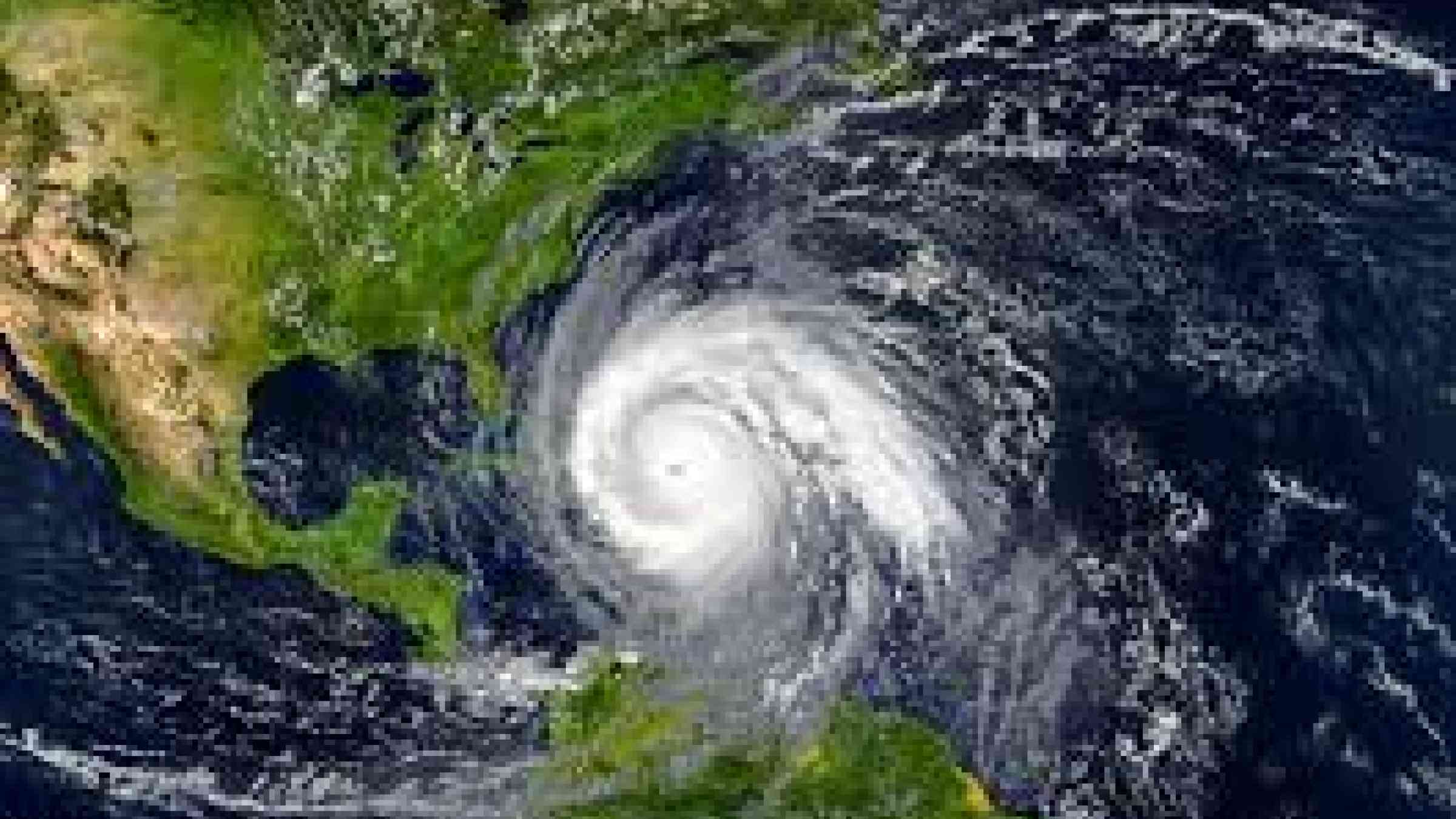Mix up financing to better protect Caribbean, say experts

PANAMA CITY, Panama, 3 January, 2020 - Menaced by increasingly violent hurricanes, Caribbean countries face an enormous bill to better protect themselves disasters and need to weave a web of financing options to help insulate against shocks, said speakers at a regional conference.
Boosting lackluster economic growth, ramping up insurance and disaster funds, and embracing the private sector would help bolster countries which needed to invest more in resilience, said speakers at the Comprehensive Disaster Management Conference (CDM11) in Sint Maarten.
"Budgeting for disaster should be a must for us all," said Silveria Jacobs, prime minister of Sint Maarten, which was ravaged by Hurricane Irma in 2017.
A common disaster fund and a joint insurance plan to protect the small businesses that drive local economies could help the region, she told the conference, organized by the Caribbean Disasters and Emergency Agency (CDEMA).
"Government cannot definitely not go it alone… Business resilience drives the economy which ensures that islands can bounce back even faster," said Jacobs, who urged more investment in resilient infrastructure.
With many countries heavily indebted, creating layers of risk financing was key if countries are to limit the economic impact of disasters, which could also include flooding, drought, tsunamis and seismic activity, said speakers.
Risk financing layers should include funds shaved from national budgets, paired with fast-paying parametric insurance and access to lines of credit, said Ming Zhang, World Bank regional practice manager for urban and disaster risk management.
While new insurance products could help protect livelihoods and the fishing industry in the event of disasters, there was more scope to expand insurance to include households and small businesses, said Zhang in an interview.
"You cannot set up a contingency fund to address a Category 5 hurricane," said Zhang, who estimates disasters cost the Caribbean 1 percent of its gross domestic product each year.
"You need a risk financing strategy… each country should look at different layers and different contingencies, insurance and other mechanisms."
While countries such as St. Lucia and Grenada were looking to set up disaster funds bolstered by lines of credit, there needs to be more focus on how money was being spent in the region to better prepare for disasters, he said.
More advanced recovery planning was needed to make sure emergency shelters and supplies were available, while strengthening homes and infrastructure could help reduce economic impact down the track, he said.
"In the midst of borrowing for public investment, governments need to ensure that these funds are certainly being spent to ensure resilience," said Ronald Jackson, CDEMA executive director, said in an interview. "That's one area that will drive down exposure and be a lower cost to government when these events occur."
NO SILVER BULLET
Emergency cash payments to small businesses, farmers and the most vulnerable after hurricanes in Barbados and Dominica helped stimulate the local economies and get people back on their feet, said speakers.
But countries needed to ensure adequate systems were in place to disperse social protection payments to make sure they reach the right people as quickly as possible, they added.
"No single financial instrument is the solution, we have to adopt a risk layering approach," Nicholas Grainger, programme associate at the World Food Programme, told the conference.
Given the private sector shells out for up to 85 percent of all investment and absorbs the lion's share of disaster losses, businesses should be closer involved in trying to driving down risk and promoting economic resilience, said speakers.
"It's very clear that reducing disaster risk cannot be done by one actor or sector alone," Nahuel Arenas, Deputy Chief of the United Nations Office for Disaster Risk Reduction (UNDRR), Regional Office for the Americas and the Caribbean, told the conference.
"Resilient investment is about integrating risk through business practices and investment decisions."
The UNDRR-backed business network, known as The Private Sector Alliance for Disaster Resilient Societies or ARISE, is growing quickly in the Caribbean where companies are increasingly aware that disaster risk reduction (DRR) makes sound business sense, said speakers.
Jeffrey Beckles, chief executive of the Bahamas Chamber of Commerce, said the private sector wanted a greater role in DRR given it was a major employer and driver of growth.
It also has a lot to lose. Businesses suffered some 90 percent of the massive losses in the Bahamas caused by Hurricane Dorian in September, he added.
"We bring to the table the ability to look further down the road than any single administration," Beckles told the conference.
"We bring to the table a much deeper, wider capacity for casting a longer-term strategy for resiliency and prospects for our country's stability,"
Developing the digital and blue economies, while finding ways to expand the benefits of industries such as tourism could help bolster the region's economy and ultimately make households more resilient, said speakers.
"Resilient people build resilient lives, and resilient communities and economies," said Sint Maarten's Jacobs.
Related links
https://www.cdema.org/cdm11/
https://www.worldbank.org/en/country/caribbean
https://cdema.org/
https://www.wfp.org/
https://www.thebahamaschamber.com/